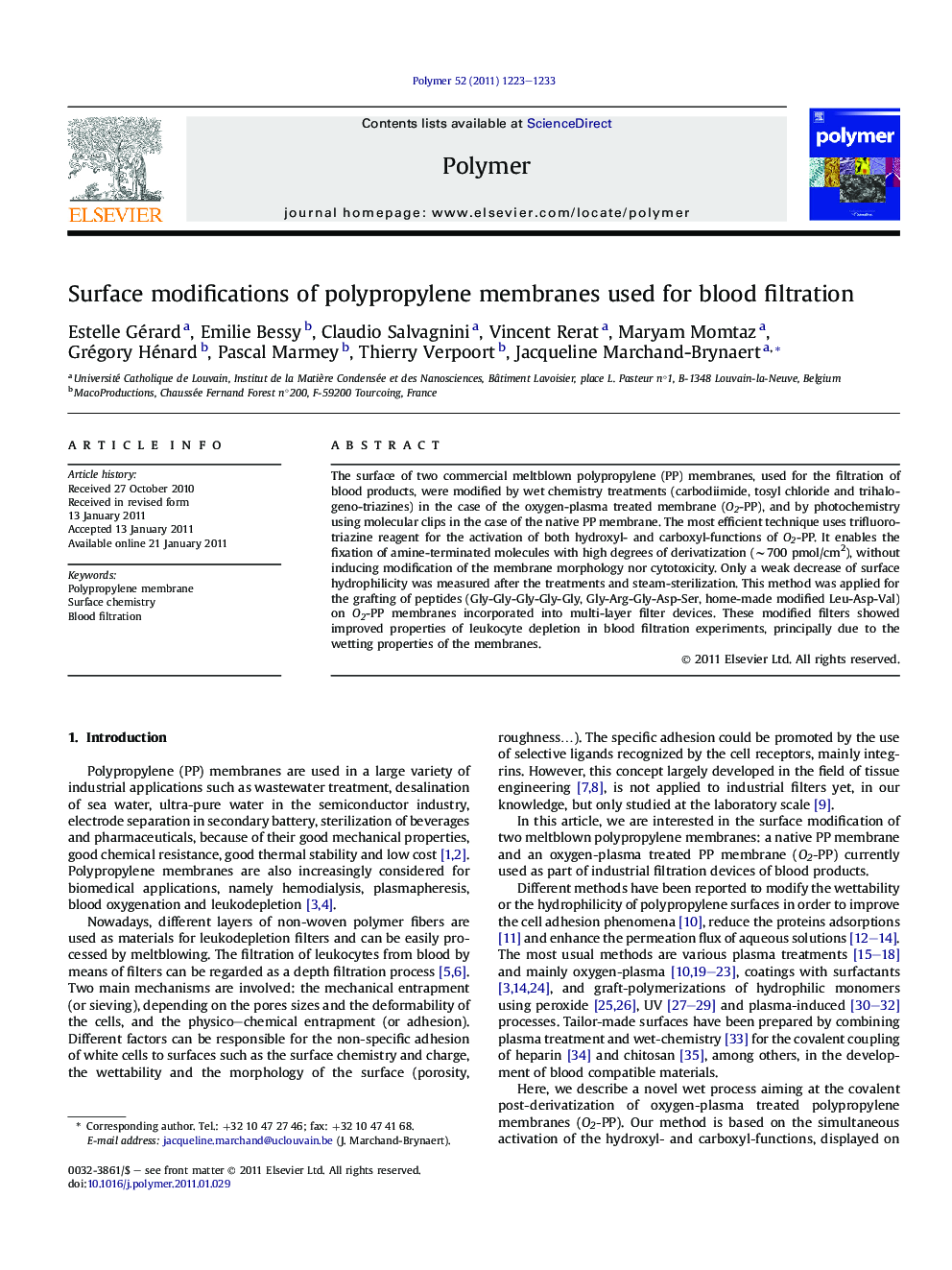| Article ID | Journal | Published Year | Pages | File Type |
|---|---|---|---|---|
| 5184107 | Polymer | 2011 | 11 Pages |
The surface of two commercial meltblown polypropylene (PP) membranes, used for the filtration of blood products, were modified by wet chemistry treatments (carbodiimide, tosyl chloride and trihalogeno-triazines) in the case of the oxygen-plasma treated membrane (O2-PP), and by photochemistry using molecular clips in the case of the native PP membrane. The most efficient technique uses trifluoro-triazine reagent for the activation of both hydroxyl- and carboxyl-functions of O2-PP. It enables the fixation of amine-terminated molecules with high degrees of derivatization (â¼700Â pmol/cm2), without inducing modification of the membrane morphology nor cytotoxicity. Only a weak decrease of surface hydrophilicity was measured after the treatments and steam-sterilization. This method was applied for the grafting of peptides (Gly-Gly-Gly-Gly-Gly, Gly-Arg-Gly-Asp-Ser, home-made modified Leu-Asp-Val) on O2-PP membranes incorporated into multi-layer filter devices. These modified filters showed improved properties of leukocyte depletion in blood filtration experiments, principally due to the wetting properties of the membranes.
Graphical abstractDownload full-size image
